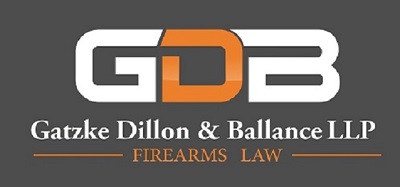“Why an AR-15 for home defense is the smart choice:
- At around 7 pounds it’s maneuverable.
- The controls — safety, mag release, trigger — are intuitively positioned.
- Low recoil makes mastering form and control easier.
- Rails allow easy mounting of lights, lasers and optics.
- 55-grain FMJ is ideal and cheap home defense ammo.
- The round will yaw or tumble when it impacts at close range.
- 20- to 30-round capacity ensure superior firepower.
- The manual of arms is simple.
- They are as or more affordable as other options.
Handguns are handy. Shotguns are powerful. But when it comes to the defense of one’s castle, the most versatile tool, besides a Secret Service detail assigned to you, is the AR-15.
Why? Simple: It’s light and compact, has low recoil and great accuracy, and can be configured any way you wish. But first, let’s dispense with some of the canards that AR-15 detractors will raise: penetration, appearance and noise.
No, the .223 Rem./5.56 NATO will not shoot through a building. In fact, on interior walls it has less penetration than that of common handgun cartridges, even when those feature JHP bullets. Unless you’re using bonded rifle bullets designed to maintain structural integrity, the bullets of a .223 Rem./5.56 NATO cartridge will yaw in drywall, break apart and not over-penetrate. Oh, they’ll go through a wall or two, but not like a handgun.
A friend of mine is the head honcho of a multi-city SWAT team. His team once had the chance to “test” a neighborhood of houses before they were torn down. They shot every house with everything they could think of. “Patrick, every single handgun bullet left the test buildings, unless it hit a pipe or the building was brick.” The .223 Rem./5.56 NATO bullets commonly would enter the second room, but not leave that for the third room. The lesson for us all is simple: Everything is a hazard to the next room, but the .223/5.56 is less so past that.
The AR-15 is the current poster child for eeeevil gunz. Some will advise you use something less “aggressive” looking in order to make your legal situation less of a problem afterward. The bad guys can be called Problem One. The legal gauntlet can be called Problem Two.
Here’s the catch: If you know the law, and you observe the law, and you don’t talk to anyone until your attorney is on hand, then Problem One can be solved. It can be solved in a lawful, moral, safe manner, which then makes the difficulties of Problem Two pretty much not. On the other hand, if you do something stupid, or unlawful, or unwise, you will have legal problems regardless of what firearm you use.
Then there’s noise. Here I have to begrudgingly admit there is some basis for concern. The muzzle blast of a rifle indoors is more than impressive — it can be deafening. However, the magnitude of that noise beyond that of a handgun or a shotgun is not that much. Yes, it’s more, but it isn’t like the other two are exactly quiet.
And, you can mitigate the noise. A suppressor may be a step too far (cost, paperwork, really making the prosecutor salivate), but there are other steps. First, not all rifle ammo is the same. A few practice sessions at an indoor range or on a covered firing line will tell you which loads are more or less noisy. (Test with hearing protection on, please.)
You can also use a Noveske KX3, a blast diverter that redirects the noise away from you without being a suppressor. You can also opt for less-noisy cartridges. An AR-15 in 9mm or .300 Blackout, with subsonic ammunition, for example, is markedly quieter than the same-size carbine chambered in .223 Rem./5.56 NATO.
Be sure to follow us on Facebook and Instagram, buttons are on the right side of the page.
If you like what you see here please share the site with a friend and also sign up for our free email Newsletter at the bottom of the page!










